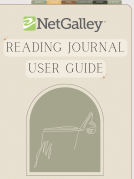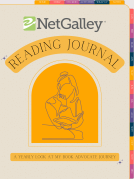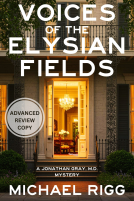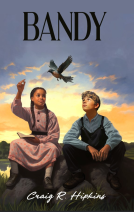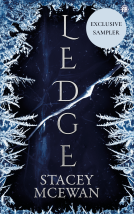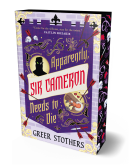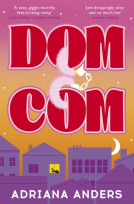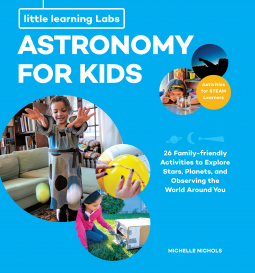
Little Learning Labs: Astronomy for Kids, abridged paperback edition
26 Family-friendly Activities about Stars, Planets, and Observing the World Around You; Activities for STEAM Learners
by Michelle Nichols
This title was previously available on NetGalley and is now archived.
Send NetGalley books directly to your Kindle or Kindle app
1
To read on a Kindle or Kindle app, please add kindle@netgalley.com as an approved email address to receive files in your Amazon account. Click here for step-by-step instructions.
2
Also find your Kindle email address within your Amazon account, and enter it here.
Pub Date 2 Oct 2018 | Archive Date 6 Nov 2018
Quarto Publishing Group – Quarry | Quarry Books
Talking about this book? Use #LittleLearningLabsAstronomyForKidsAbridgedPaperbackEdition #NetGalley. More hashtag tips!
Description
It's not easy to explain and understand what lies beyond the night sky. This curated collection of 26 projects from the best-selling Astronomy Lab for Kids introduces children to the basics of outer space through 26 hands-on labs that can be completed with everyday items from around your house. It's the perfect resource for teachers, homeschool families, and community groups.
Mini astronomers will learn about things such as the size and scale of planets using sandwich cookies and tennis balls, how to measure the speed of light with a flat candy bar and a microwave, how to make a simple telescope with magnifying glasses, and so much more. Kids of all ages and experience levels will love completing these hands-on labs with the guidance of adults.
Why wait to introduce children to the expansive wonder of the skies, when Little Learning Labs: Astronomy Lab for Kids can put it within their reach today?
The popular Little Learning Labs series (based on the larger format Lab for Kids series) features a growing list of books that share hands-on activities and projects on a wide host of topics, including art, geology, math, and even bugs—all authored by established experts in their fields. Each lab contains a complete materials list, clear step-by-step photographs of the process, as well as finished samples. The activities are open-ended, designed to be explored over and over, often with different results. Geared toward being taught or guided by adults, they are enriching for a range of ages and skill levels. Gain firsthand knowledge on your favorite topic with Little Learning Labs.
Marketing Plan
New in paperback at an attractive price point, this entry-level introduction to our lab series gives young readers a crack at hands-on science and art learning.
We will focus our pitches on bloggers who love a good value and educators who can use smaller sets of activities effectively.
The release date for these books makes them a perfect fit for back-to-school reading lists.
Available Editions
| EDITION | Other Format |
| ISBN | 9781631595608 |
| PRICE | US$12.99 (USD) |
| PAGES | 80 |
Average rating from 12 members
Featured Reviews
 Kimberly O, Educator
Kimberly O, Educator
Astronomy Lab for Kids is an excellent hands-on book filled with fun, kid-appropriate experiments. I liked how clear and easy to read the layout of the book was. I especially appreciated that there was an emphasis on keeping a science journal of the experiments. Kids are able to engage with the material by doing, observing, and recording the experiments.
The instructions are written so that a kid could feasibly follow the instructions themselves. It is also clearly noted when adult supervision and participation is required. I really like how much kids can do independently - allowing kids to foster a real intellectual curiosity without constant input from an adult.
I would definitely recommend purchasing a hard copy of the book - it will be much more user-friendly than an electronic copy.
Astronomy and science relating the solar system explained with easy to replicate experiments. Each experiment is explained in detail and with pictures.
I especially liked the scientific outline of each experiment.
I always find that children generally take an interest in the skies above them and the wondrous shapes it contains, and 'Astronomy Lab For Kids', is a fantastic addition to the bestselling Little Learning Labs series from quality publisher Quarto. Make no mistake, these are some of the best books on the market for youngsters! Michelle Nichols is Director of Public Observing at the Adler Planetarium in Chicago, IL and holds a Bachelor of Science degree in Physics and Astronomy. This is her second book.
Although the cover art leaves a lot to be desired, something which the publisher usually excels in, this is a classic case of "don't judge a book by its cover". It contains 26 Family-friendly Activities about Stars, Planets, and Observing the World Around You; Activities for STEAM Learners - STEAM is now gaining traction amongst educators. It is an educational approach to learning that uses Science, Technology, Engineering, Arts and Mathematics as access points for guiding student inquiry, dialogue and critical thinking. Rather than an informative non-fiction book, this is actually an activity guide. The experiments inside are ones that children will simply revel in and will likely keep them entertained for hours.
The contents of the book are as follows: There is a short introduction then the rest of the book is split into four different units. Unit One, 'Observing', contains nine separate activities. Unit Two, 'Scoping Out the Science', contains five separate activities. Unit Three. 'Exploring Or Solar System', contains six different activities and Unit Four, 'Seeing Stars', contains another six. Each activity tells you approximately how long the task will take, a list of materials you will need, safety tips and hints, and detailed, clear and easy to follow, step-by-step instructions. The materials necessary for most of the experiments are items most families have around the home. For each there are also sections entitled 'The Science Behind The Fun' and 'Creative Enrichment' which both add extra information about the particular experiment and what it is trying to teach. There are accompanying photographs which are helpful to ensure you are doing everything correctly, and there is a helpful section at the end of the book entitled 'More Resources' which suggests how a child can further their interest in Astronomy. Included at the very back is a Glossary of terminology.
This is the perfect activity book to keep curious kids busy in the school holidays. It would also make a wonderfully thoughtful and generous gift, especially for those who are passionate observers of the vast blue yonder. Everything is written in vocabulary children can easily understand. I have no hesitation in highly recommending this book, particularly to children aged eight-to-twelve, but in all honesty, this is a fantastic book for space-loving kids of any age.
Many thanks to Quarto Publishing Group – Quarry Books for an ARC. I was not required to post a review, and all thoughts and opinions expressed are my own.
 Lucy G, Reviewer
Lucy G, Reviewer
Great fun, and educational, for all the family. The expetiments/projects are accessible as they use easily available resources. I learnt some new things myself!
 Katie B, Educator
Katie B, Educator
As a homeschooling parent, it is sometimes a struggle to find a book that is easy to open and teach from (without hours reading and understanding beforehand) and that kids enjoy. This book strikes that balance wonderfully. It is a quick read and material gathering for parents and written in an engaging, fun way.
I especially like how each the introduction section for the book is written. It explains how to set up a science journal. This section gives kids ownership over the work they are doing and also gives permission for them to do things in their own way. Students are encouraged to “use any format you are comfortable with that helps you keep track of what you are doing… use what works best for you.” This takes out some of the fear and apprehension that comes from doing science activities, in which there is usually a “right and wrong” way to complete it. Giving children this freedom allows them to engage with the experiment without fear.
As the book continues, the labs are set up in a clear, easy to follow pattern. Each step is fully explained in language that is easy for children to comprehend. When an unfamiliar word is used, it is explained in a gentle way without a glaring “this is a new vocabulary word” designation. It sounds like we as parents naturally do when introducing new words to our children. The “Science Behind the Fun” and “Creative Enrichment” sections add more activities and information to guide learners who want more about a certain topic. (along with the “more resources” section in the back of the book) This is great, since the labs themselves are not long, but definitely exciting enough to spark an interest in the topic.
This is definitely a book I will be buying and adding into an astronomy unit for my space-obsessed kids. With the way labs are organized, they provide an entire year of science experiments to guide the kids (and I!) through our explorations.
 Sally W, Reviewer
Sally W, Reviewer
My Granddaughter is really into the night sky and stars and planets. When I saw this book I knew it would be good for her collection. The first thing that struck me about this book is all the experiments are done with a lot of things you already have. They are simple and easy to create and fun for the children. You can make anything from Glowing Water to Cool Crystals to a Pinhole Projector. Each one has safety tips, Instructions, Science Beyond the Fun and Creative Enrichment. They all have pictures of the children who tried the experiments and a glossery of terms in the back of the book. This is a great way to get the young ones off the computer and into something that is going to enrich their love of science and astronomy. I highly recommend this book for a great family fun project.
I recieved this book in exchange for my honest opinion.
 Vidya T, Reviewer
Vidya T, Reviewer
The book includes 26 hands on activities with focus on astronomy that can be easily done at home or class. With easy to follow instructions, safety tips and setup hints for each activity, information on time and materials needed, as well as the science behind each project along with additional ideas to explore, this book is a valuable resource of fun and learning. Kids can easily follow along by themselves for many of the activities, and for the few that needs adult supervision, that is minimal as well, so it encourages independent learning in the truest sense.
I loved that most of the activities take around 15 minutes or so and thus can be broken down as fun breaks during the day in class or at home. It defines observation and dives deep into the many aspects of observation through the labs (how do we see surfaces that we can’t see directly, using the tools we have to figure out more – including our senses, and using recorded observations to arrive at answers).
Labs include discovering how and why stars twinkle, making a pinhole projector, finding out the secret of Mars’ redness in your home, and exploring the night sky, among other exciting, easy to do ones. Did you know that the word comes from the Greek planetes meaning wanderers? Find out this and more facts.
This is a must-have for school libraries, and for all those budding scientists and astronomers, and for parents who want fun learning projects to occupy their kids on long summer vacations (and any other time too). It also includes the basics of how to start and keep a scientific journal to record observations, as well as a useful glossary and additional resources to use. It shows that you can learn by observing and by doing and have tons of fun in the process.
I will be using it at home and with my Girl Scout troop and am looking forward to it. Which means I will be getting my own hard copy for use in my home library soon as my ARC will only last this long and then disappear into its own black hole! And really not sure which lab I will be working on first – make water flow or create craters, or just finish it lab by lab from one through 26 🙂
Rating: 5/5
Reading Level: 8 – 11 years (maybe all ages actually since there are so many activities that can be done by the youngest ones and I know I am going to enjoy many of them myself)
Reread Level: 5/5 – these can be done so many times over.
Thanks to NetGalley for this advance review copy. Opinions are fully mine.
Astronomy Lab for Kids is a new reformatting and abridged re-release of Astronomy Lab for Kids (pub 2016) by Michelle Nichols. This abridged version is 80 pages and available in ebook and paperback formats.
I'm a huge fan of STEM education for everyone . In fact, the earlier we can introduce everyone to the limitless opportunities for growth, discovery, problem solving and coolness, the better off we'll all be. I'm therefore quite excited whenever I see science/tech books aimed specifically at young readers (and their caregivers). The author of this book is an experienced educator with a science background.
Although this book is generally aimed at kids, there are a lot of really neat labs which answer questions which would stump many adults (for example, why why are there so many craters on the moon, mom?!). The book's format presents learning units set up as safe lab exercises which can be done in a limited amount of time, with a limited number of household items and in a manner which is fun, engaging, and accessible.
The photography and text supplement and support the experiments very well. I like that the author gently introduces good lab protocol regarding safety and record-keeping (lab journals for the win!).
This is a good, appealing, and solid book, very well done.
Five stars
I do have one truly minuscule quibble with the book, and I feel nit-picky even writing this down. At the end, the experimenters pictured in the book (the children), get credit photos, and it struck me that the caucasian kids were over-represented. (Short explanatory apology. I went through university in an engineering program in the early 1980s and across all the disciplines, there were only a handful of girls/women. I spent my university years very isolated and alone (as well as being 3-4 years younger than my peers.) This book gets the gender ratio democratically correct at 50/50 boys/girls, but they seem to be mostly or all(?) white kids). It shouldn't matter, and it doesn't really matter, and I am sure that the editors and author considered this. It's also entirely possible that whatever selection criteria were used to find the participants was limited by the applicants or something.
Anyhow. STEM book for kids, and it's a good one.
You will find some great information and experiments for classrooms or home use in this easy-to-understand book. The experiments don't call for unusual items, but rather things that are normally found in most homes.
The first part of the book encourages children to keep a science journal of the experiments they perform. A sample format of a journal is given with explanations of what might be included in each section. As an example, here is one portion, My Reflections:
"My Reflections: your feelings about how you think the lab went, what you think the lab results mean, and any answers to your questions you have found."
Below is a list of the Units.
Unit 1 Observing (9 labs)
Unit 2 Scoping Out the Science (5 labs)
Unit 3 Exploring Our Solar System (6 labs)
Unit 4 Seeing Stars (6 labs)
Each lab is extremely easy to understand and the format is very straightforward. The lab includes time, materials, safety tips, setup hints, and instructions with numbered steps.
My Thoughts
What Concerned Me: Nothing
What I Liked Most: The format of the book makes it very appealing as well as the fact that most labs can be done with household items. I see this book as providing hours of learning and fun.
 Reviewer 462955
Reviewer 462955
Good book for kids who are interested in learning about astronomy. It gives kids an overview of astronomy and lets them use what they learn to experiment.
Readers who liked this book also liked:
We Are Bookish
General Fiction (Adult), New Adult, Romance
